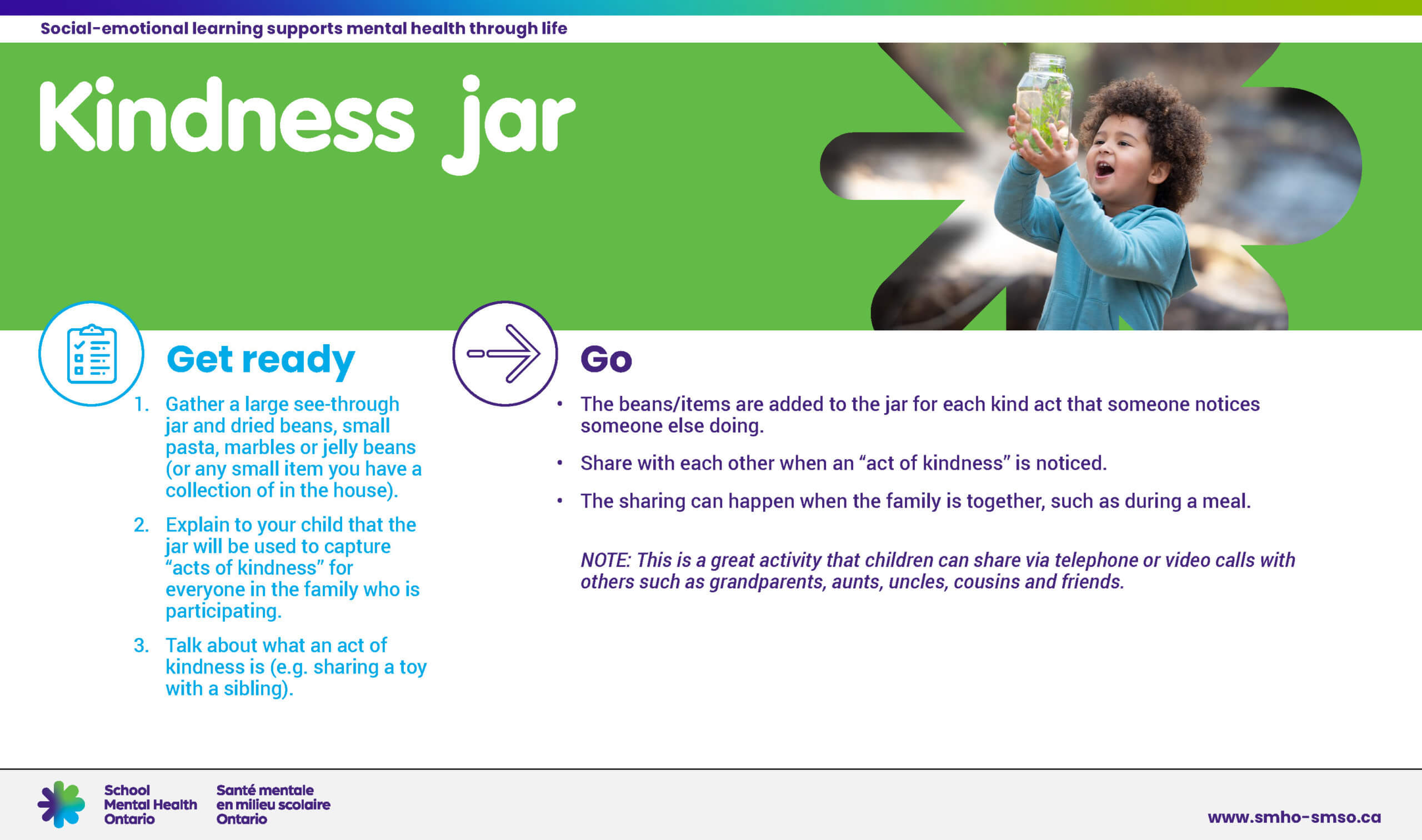


Time
1-5 minutes
Level
Primary / Junior / Intermediate
Material
Jar, beans/marbles/jellybeans
Purpose
To encourage kindness and respect in the classroom
- Beans are added to the jar for each kind act that is observed.
- Students can nominate others for “Bean Awards” when they notice or experience an act of kindness.
- When the number of beans in the jar reaches a certain level, there is an acknowledgement associated with that level.
NOTE: Kindness beans CANNOT be removed.
- After this practice has been in place for a period of time and a class reward has been enjoyed, have students reflect on how it feels to contribute toward a common goal and to recognize/acknowledge the kind behaviour of others.

Get ready
- Gather a large see-through jar and dried beans, small pasta, marbles or jelly beans (or any small item you have a collection of in the house).
- Explain to your child that the jar will be used to capture “acts of kindness” for everyone in the family who is participating.
- Talk about what an act of kindness is (e.g. sharing a toy with a sibling).
Go
- The beans/items are added to the jar for each kind act that someone notices someone else doing.
- Share with each other when an “act of kindness” is noticed.
- The sharing can happen when the family is together, such as during a meal.
NOTE: This is a great activity that children can share via telephone or video calls with others such as grandparents, aunts, uncles, cousins and friends.
Activities to try at home that connect to key areas of social-emotional learning
Read: Have You Filled a Bucket Today?: A Guide to Daily Happiness for Kids by Carol McCloud
- Could be done as a “filling buckets” activity, but this is not essential. In this variation, students make ‘buckets’ and notes are dropped into the buckets (see “Supplementary resources”).
Encouraging students to notice kind actions and appreciate their peers contributes to an emotionally positive and safe climate in the classroom, which allows students to stay connected to school (Blum & Libbey, 2004), regulate emotions, and effectively focus on academics (Eisenberg, Fabes, Guthrie, & Reiser, 2000).
Blum, R. W., & Libbey, H. P. (2004). School connectedness – strengthening health and education outcomes for teenagers. Journal of School Health, 74(7), 231-232. doi:10.1111/j.1746-1561.2004.tb08278.x
Eisenberg, N., Fabes, R. A., Guthrie, I. K., & Reiser, M. (2000). Dispositional Emotionality and Regulation: Their Role in Predicting Quality of Social Functioning. Journal of Personality and Social Psychology, 78(1), 136-157. doi:10.1037/0022-3514.78.1.136
Our Catholic community is stronger when we are able to recognize and value the God-given talents and strengths of others, focussing on seeing the good in them.
(1d) A discerning believer formed in the Catholic Faith Community who develops attitudes and values founded on Catholic social teaching and acts to promote social responsibility, human solidarity and the common good.
Belonging and contributing: to develop relationships with others and contributions and part of a group
It became this overflowing visual piece.
Or, view all practices and use filters to find what you need
